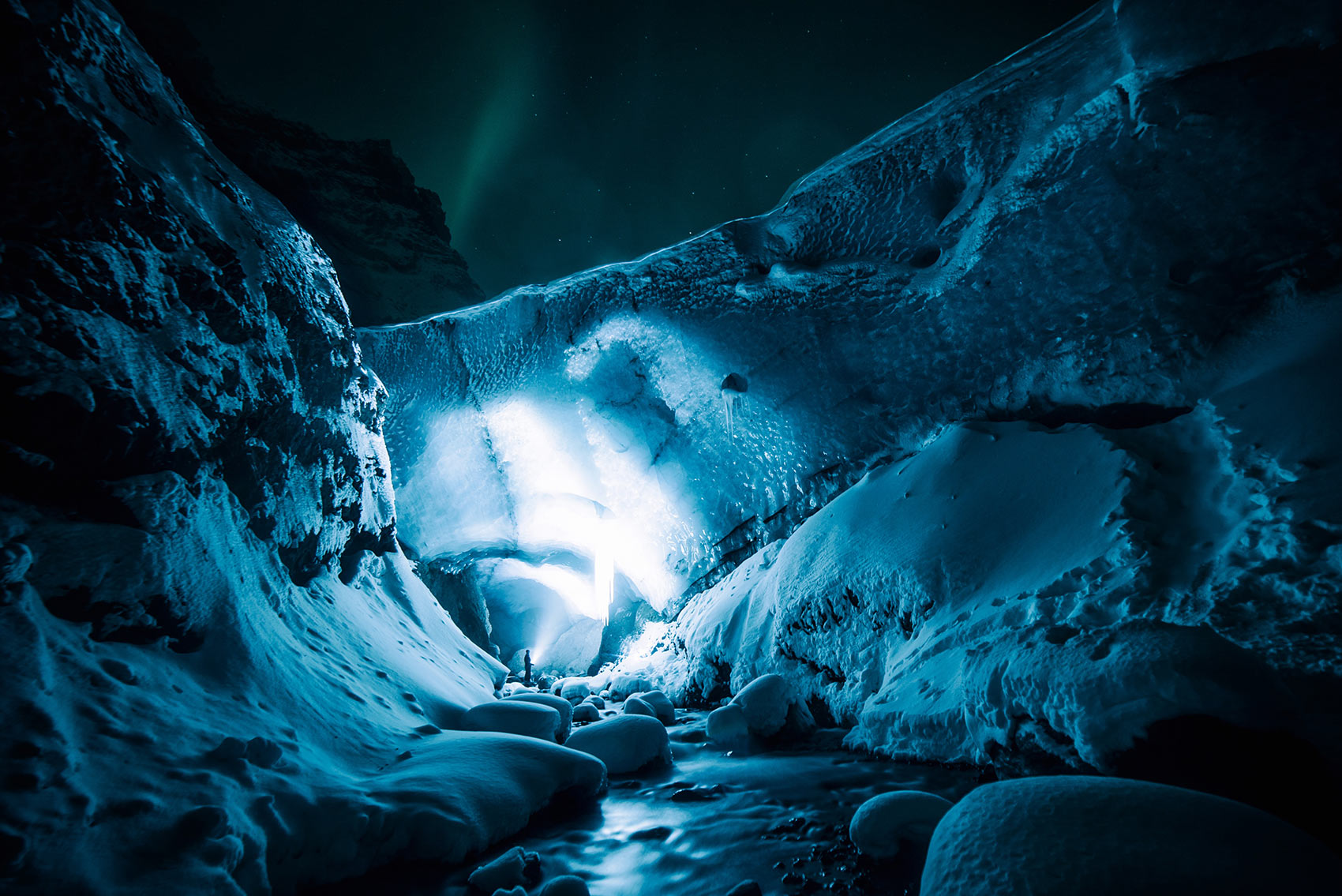Nepal’s Closest Thing to Ice Caverns ❄️
When people think of ice caverns, they often picture Iceland’s glowing blue caves or Alaska’s frozen tunnels. Nepal doesn’t have the same tourist-ready ice caverns, but hidden across the Himalayas are places where you can experience something strikingly close – glacier caves, frozen waterfalls, and winter caves that feel like nature’s own ice palaces.
1. Glacier Caves of Khumbu (Everest Region)
Deep under the mighty Khumbu Glacier, meltwater sometimes carves hollow tunnels through the ice. These temporary formations look like natural ice caves, shimmering with shades of white and blue. They are unstable and mostly known to mountaineers, but they remain Nepal’s purest version of real ice caverns.
📍 Location: Khumbu Glacier, near Everest Base Camp
🕓 Best time: Late winter/early spring (when glacial melt is less active)
⚠️ Note: Not tourist-accessible – admired from a distance.

2. Frozen Waterfall Caves in Manang
In Manang, winter transforms waterfalls into towering ice walls. Locals say some falls near Humde and Braga freeze solid, and you can stand behind the icy curtain, creating the feeling of stepping into a frozen cave. Adventurers love this for its raw beauty.
📍 Location: Around Humde and Braga villages, Manang
🕓 Best time: December – February
✅ Experience: Safer than glacier caves, accessible during treks.

3. Icicle Caves of Mustang
Upper Mustang, already famous for its hidden sky caves, becomes even more magical in winter when icicles hang from rock faces and cave mouths. Some caves near Tsarang and Lo Manthang sparkle with frozen formations, giving off a glacial cavern feel.
📍 Location: Lo Manthang & Tsarang areas, Upper Mustang
🕓 Best time: Mid-winter (January–February)
✨ Bonus: See both ancient caves and seasonal ice wonders.

4. Rolwaling Valley – Frozen Waterfalls & Caves
Near the trail to Tsho Rolpa Lake, streams and waterfalls freeze into crystalline structures. Trekkers sometimes find hollows behind the frozen falls where you can duck in briefly – a Nepal-style “ice cave.”
📍 Location: Rolwaling Valley, Dolakha
🕓 Best time: Winter (December–February)
🌌 Vibe: Untouched, off-the-beaten-path Himalayan wilderness.

5. Maratika Cave – Halesi, Khotang
While Maratika Cave isn’t an ice cave, it offers a similar cool, otherworldly vibe, especially in winter. The cave is a revered pilgrimage site for Hindus and Buddhists, believed to be a place of meditation and spiritual awakening. Inside, the temperature remains consistently cold, giving the impression of stepping into a natural frozen cavern.
📍 Location: Halesi, Khotang District, Nepal
🕓 Best time to visit: Winter (December – February) for the “frozen cavern” experience, though the cave is accessible year-round
✨ Experience: Combines natural coolness with spiritual ambiance, offering a unique Nepalese twist on an ice cavern experience
Tips for Travelers
-
Dress for extreme cold: sub-zero sleeping bags and layered clothing are essential.
-
These are seasonal wonders – you’ll only see them in the coldest months.
-
Unlike Iceland’s safe tourist ice caves, Nepal’s versions are raw, wild, and often unstable – always go with a guide if you’re exploring frozen areas.
Nepal may not have commercialized glowing blue ice caverns, but its glaciers, frozen waterfalls, and winter caves offer something more authentic: raw Himalayan magic. For those willing to trek in the cold, you’ll find Nepal’s ice wonders are every bit as enchanting.
These places are perfect for travelers who want the magic of a cool, cave-like interior without venturing into high Himalayan glaciers. Pair it with a visit to the nearby regions to enjoy both the cultural and natural wonders of the region.




